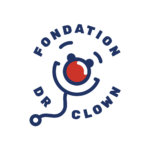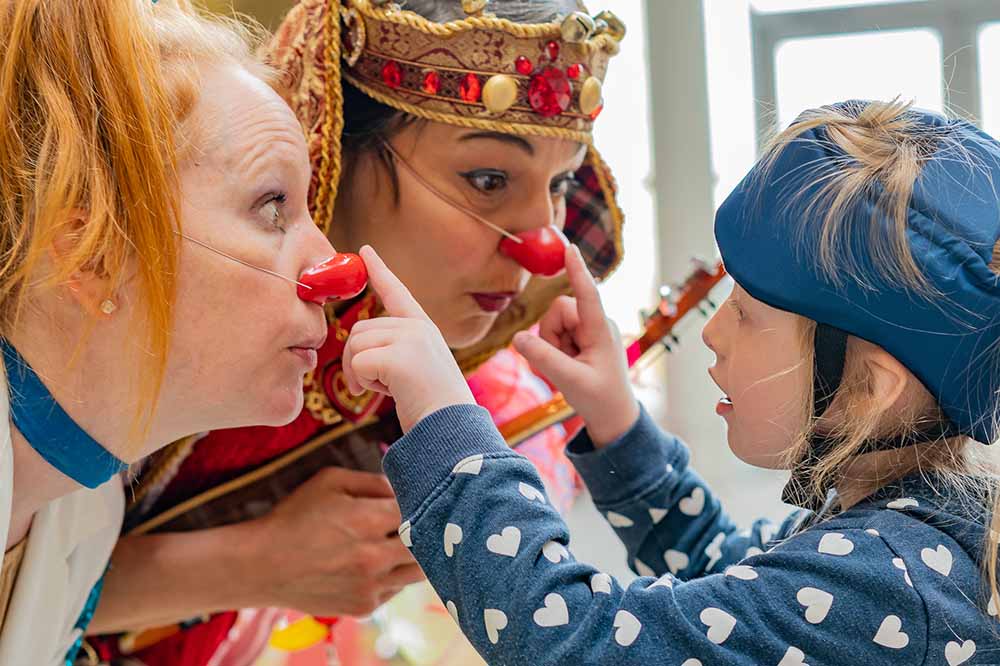Pediatric hospitals
Areas of intervention
Hospitalized children
Hospitalized children must often undergo a tedious and frequently painful routine of treatments associated with their condition. Added to their distress is that they face these in strange and unfamiliar surroundings, separated from their parents and the comforts of home. Their daily lives are filled with protocols and strict rules. Our therapeutic clowns deliver joy and fun. They sweep away the greyness and bring a little sunshine into the sterile and controlled hospital environment. Because their goal is to make meaningful connections with patients, our clowns always take their cue from them and in this way encourage free and spontaneous play.
The reassuring presence and therapeutic benefits of clown practitioners is increasingly recognized by health and education professionals. Our artists are often integrated into patient care and treatment plans and are frequently requested to accompany a child during a difficult procedure or treatment. Here is an entry from the notebook of one of our therapeutic clowns, Dr. Guy Môve, which clearly demonstrates the importance of Dr. Clown’s role in making care procedures more pleasant, facilitating the work of medical staff and reducing the anxiety level of patients and parents:
“Mathieu has eye cancer and in the last few years, he’s had to undergo eye exams almost every month. It usually takes four people to put in the eye drops: three to hold him, because he screams and fights, and one to put in the drops…. With the help of Dr. Frog, we got it down to only one person… the one who put in the drops! After four years of tantrums, that’s a pretty spectacular result! The next time we come, we’ll definitely ask if Dr. Frog is around. Thank you again!” – Father of Mathieu, 5 years old


“How many times did I visit children in their rooms and say, ‘Show me your scar, I’m going to look at your tummy.’? Then I met the Dr. Clowns, and it struck me that while I was coming to check on an organ or a disease, they were coming to check on the person. Medicine must be humanized. It will only be humanized when we treat the person, the family. I couldn’t do my work without the support of the Dr. Clowns. I didn’t tell them, but I often skipped my rounds to see the children, and returned in the evening, because I wanted them to spend quality time with the Dr. Clowns first.”
– Dr. Suzanne Vobecky, pediatric cardiac surgeon, CHU Sainte-Justine
Help us break isolation
The positive impact of our programs is recognized by both medical practitioners and educators, who integrate our therapeutic artists into their care plans and educational objectives.


